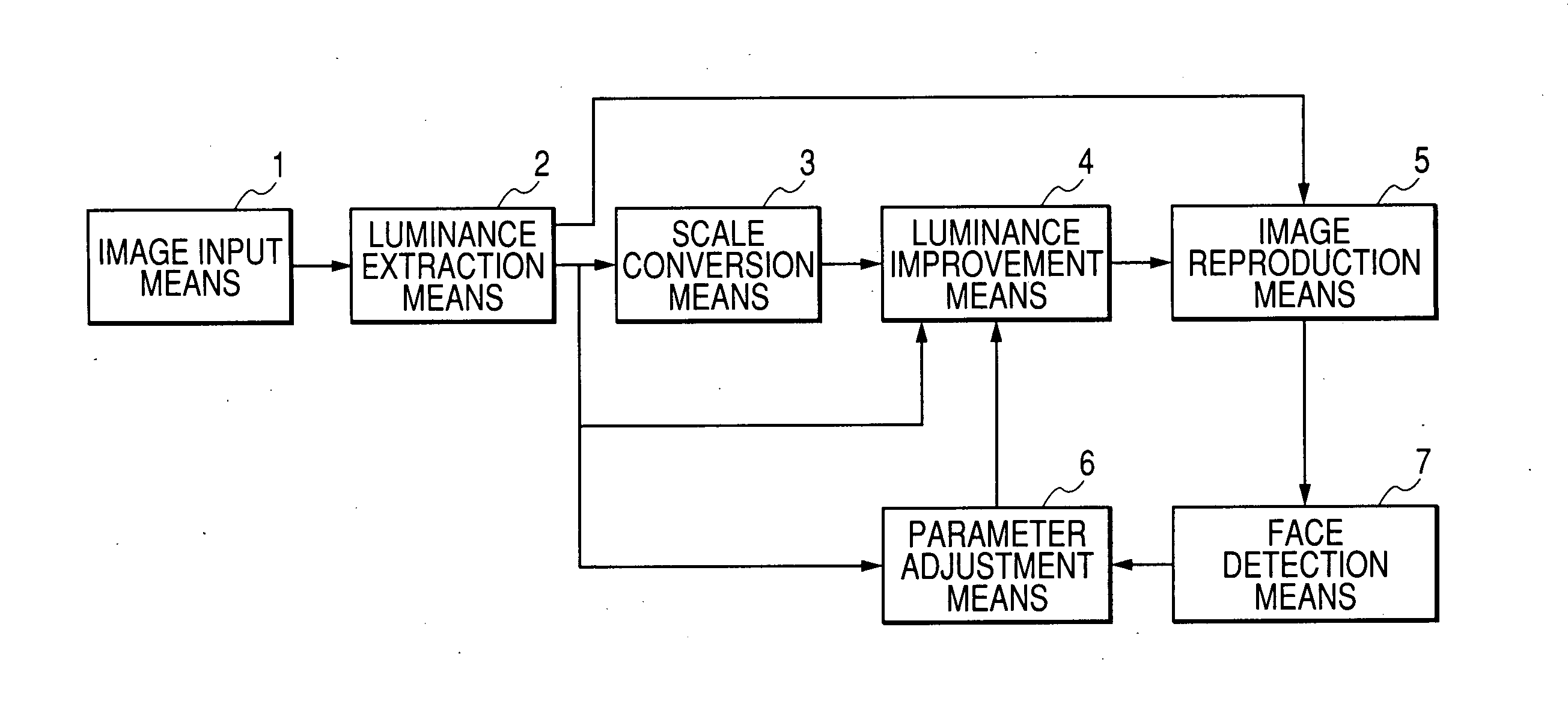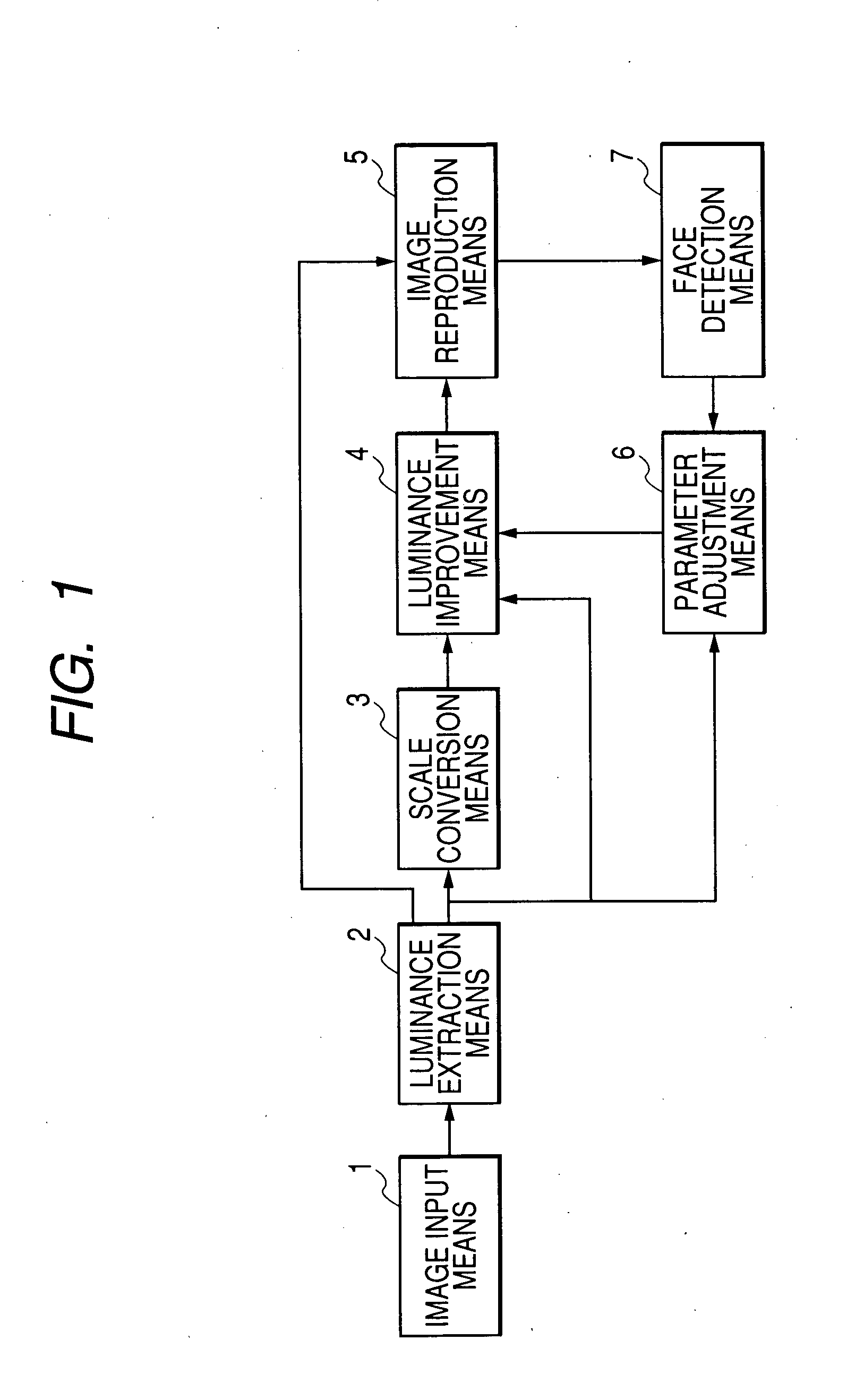Image processing apparatus and method
a technology of image processing and apparatus, applied in the field of image processing apparatus and method, can solve the problems of troublesome user's exposure correction operation, excessive brightness of the background portion of the main subject, and difficulty in appropriately determining the brightness of the image, so as to achieve automatic adjustment of the degree of brightness improvement of the brightness distribution, the effect of improving the brightness distribution
- Summary
- Abstract
- Description
- Claims
- Application Information
AI Technical Summary
Benefits of technology
Problems solved by technology
Method used
Image
Examples
first embodiment
(First Embodiment)
FIG. 1 is a block diagram showing the structure of an image processing system according to the first embodiment of the present invention.
In FIG. 1, reference numeral 1 denotes an image input means for inputting digital image data (hereinafter, called image data) into the image processing system. For example, the input means is constituted by a digital camera, a scanner or the like.
Reference numeral 2 denotes a luminance extraction means for extracting a luminance component and a color component from the image data input by the image input means 1.
Reference numeral 3 denotes a scale conversion means for obtaining a distribution, on relatively large scale, of the luminance components of the image data output from the luminance extraction means 2.
Reference numeral 4 denotes a luminance improvement means for improving a distribution of the luminance components of the image data by use of the luminance component of the image data output from the luminance extrac...
second embodiment
(Second Embodiment)
FIG. 4 is a block diagram showing the structure of an image processing system according to the second embodiment of the present invention.
In FIG. 4, reference numeral 41 denotes an image input means for inputting digital image data (hereinafter, called image data) into the image processing system. For example, the input means 41 is constituted by a digital camera, a scanner, or the like. Reference numeral 42 denotes a luminance extraction means for extracting a luminance component and a color component from the image data input by the image input means 41. Reference numeral 43 denotes a backlight detection means for obtaining a degree of backlight of the image data input by the image input means 41 from the luminance component of the image data output from the luminance extraction means 42. Reference numeral 44 denotes a face detection means for detecting, as a face area, a portion corresponding to a person's face from the image data input by the image input mea...
PUM
 Login to View More
Login to View More Abstract
Description
Claims
Application Information
 Login to View More
Login to View More - R&D
- Intellectual Property
- Life Sciences
- Materials
- Tech Scout
- Unparalleled Data Quality
- Higher Quality Content
- 60% Fewer Hallucinations
Browse by: Latest US Patents, China's latest patents, Technical Efficacy Thesaurus, Application Domain, Technology Topic, Popular Technical Reports.
© 2025 PatSnap. All rights reserved.Legal|Privacy policy|Modern Slavery Act Transparency Statement|Sitemap|About US| Contact US: help@patsnap.com



